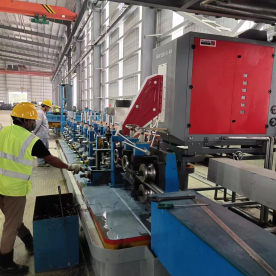[Induction heating]Transforming Industries: The Revolutionary Impact and Applications of Induction Heating Technology in Modern Manufacturing and Home Use
****
Induction heating is a process that has garnered significant attention in recent years due to its efficiency and versatility in various applications, spanning both industrial and domestic environments. This technology employs electromagnetic induction to heat electrically conductive materials, notably metals, with precision and speed. As industries continue to evolve, induction heating emerges as a transformative tool capable of improving production processes, enhancing the quality of products, and promoting sustainable practices.
Understanding Induction Heating
At the core of induction heating is the principle of electromagnetic induction, initially discovered by Michael Faraday in the 19th century. When an alternating current is passed through a coil, a magnetic field is created around it. By placing a conductive object within this magnetic field, electric currents, known as eddy currents, are induced within the object itself. These eddy currents flow against the resistance of the material, generating heat. The degree of heat produced depends on several factors, including the material’s electrical conductivity, the frequency of the alternating current, and the geometry of the inductive coil.
Advantages of Induction Heating
One of the primary benefits of induction heating is its efficiency. The system can reach high temperatures in a matter of seconds, significantly reducing heating time compared to traditional methods such as gas or flame heating. This rapid heating capability is especially advantageous in manufacturing, where time is crucial and operational costs must be minimized.
Moreover, induction heating offers precise temperature control, allowing for consistent results and reducing the risk of overheating or damaging delicate components. This precision also contributes to enhancing the quality of finished products, as manufacturers can achieve uniform heating, crucial for processes like hardening, brazing, and melting.
Another notable advantage is the energy efficiency of induction heating systems. Unlike conventional heating methods that often involve loss of heat to the surrounding environment, induction heating minimizes waste by directing heat precisely to the desired area. This aspect not only reduces energy consumption but also lowers operational costs and enhances sustainability, making it a more environmentally friendly option.
Applications of Induction Heating
Induction heating finds applications across a myriad of industries, each harnessing its benefits in distinct ways.
1. **Manufacturing**: In metalworking, induction heating is critical for processes like forging, hardening, and heat treatment. These methods improve the mechanical properties of metals, making them more robust and durable.
2. **Electronics**: The electronics industry utilizes induction heating for soldering and component assembly, where precision and speed are paramount. Induction heating can quickly and uniformly heat solder joints without affecting surrounding components.
3. **Automotive**: The automotive sector employs induction heating for parts manufacturing and repairs. For example, it is used in the hardening of gears and axles, as well as in the brazing of components, ensuring higher performance and longevity.

Transforming Industries: The Revolutionary Impact and Applications of Induction Heating Technology in Modern Manufacturing and Home Use
4. **Cookware**: In domestic settings, induction heating has been embraced in cooking appliances. Induction cooktops provide quick, responsive heat while keeping the cooking surface relatively cool to the touch, enhancing safety and convenience for home cooks.
5. **Jewelry Making**: Artisans use induction heating for melting precious metals and soldering intricate pieces, benefiting from the precise temperature control this technology offers.
Challenges and Future Prospects

Transforming Industries: The Revolutionary Impact and Applications of Induction Heating Technology in Modern Manufacturing and Home Use
Despite its advantages, the adoption of induction heating technology is not without challenges. The initial investment can be relatively high, particularly for small enterprises. Additionally, operators need training to efficiently handle induction heating equipment and optimize processes. However, as the technology evolves, costs are expected to decrease, making it more accessible to a wider range of industries.
Looking ahead, the potential for induction heating technology is immense. As advancements continue in materials science and circuit design, induction heating could become integral in more sectors, including renewable energy and advanced manufacturing. For instance, its role in electric vehicle production is poised to grow, potentially revolutionizing how these vehicles are assembled and maintained.
Conclusion

Transforming Industries: The Revolutionary Impact and Applications of Induction Heating Technology in Modern Manufacturing and Home Use
Induction heating is a powerful tool reshaping various industries and home applications, exemplifying innovation in heating technology. With its efficiency, precision, and adaptability, it represents not only a solution for contemporary challenges but also a promise for future advancements in manufacturing and daily life. As we continue to explore its capabilities, induction heating is likely destined to play an even more significant role in shaping how we manufacture, cook, and ultimately live.Spare Parts Kit for Annealing Machines